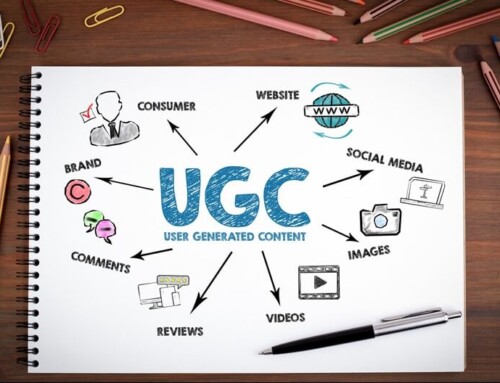In an ideal world, sales leads would close quickly with little effort or time invested. The reality is that they require work and, in most cases, a significant amount of time. Unfortunately, far too many salespeople give up on leads that are perfectly qualified. Eighty percent of sales require five follow-up calls, but 44 percent of salespeople give up after just one follow-up call. (1)
When salespeople hear “no,” an objection, or even just prolonged silence, they tend to think that one of the following scenarios is at play:
- They cannot overcome the prospect’s resistance
- The prospect is too busy and will contact the salesperson when they are ready
- A lack of returned calls or email responses means the opportunity is dead
When the average salesperson encounters a series of rejections, it’s not uncommon to rely on methods such as:
- making the sales messaging more compelling
- building stronger relationships with the prospect
- finding ways to differentiate themselves from the competition
- improving their due diligence and ensuring the product or service meets the customer’s needs.
While these strategies refine selling as a whole, they often fail because these methods don’t address the larger issue, which is a play.
The real issue is that the salesperson allows the prospect to control the sales process rather than taking control themselves. This issue not only renders sales efforts ineffective but can also be counterproductive.
This challenge, although it may seem intimidating, is not impossible. Implementing the following strategies will help salespeople significantly boost the sales process – and the number of leads they convert.
Stop Focusing on Budget Constraints
Yes, staying within the budget is essential. However, when sales professionals fixate on a budget restriction, this can lead to mindset challenges. Asking the “what’s your budget question” allows the buyer to establish the perceived value instead of the sales professional setting the actual value standard.
If a prospect says, “I have $150,000 budget,” this isn’t to say that they may have budget restrictions. However, it merely indicates that they have guidelines for expenditures. Sales professionals need to understand that there are frequently loopholes within budgets. For example, a budget shared between departments, where the shared value outweighs the total cost increase, can be justified. Understanding this particular loophole allows the sales professional to address cost objections before they become issues. However, asking the “what is your budget” question sets up the conversation for an immediate price rejection later.
The solution to this problem is to focus on finding the most critical factors to the prospect. For example:
What is inefficiency costing them right now?
- How much do lost income opportunities cost them right now? (You can also substitute with market share, brand awareness, etc.?)
- What are the additional expenses related to outdated technology, processes, lack of training, etc.?
- How much are they paying to keep people in positions that aren’t productive, cost them money/time/resources?
- What is the cost of employee turnover due to issues such as low morale, lack of growth opportunities, and attracting unqualified talent?
- How much does it cost the business to acquire new customers? What’s the customer churn rate?
- How much time is invested in support, service, or repair due to defects, shipping issues, etc.?
All of the above can prove costly to businesses and can justify budget increases. Often it’s not just about technology. Usually, it’s about the processes, people, and technology that all work together, for example. When sales professionals take the time to listen and truly understand the prospect’s needs and issues, it can be much easier to get a better picture of what’s going on.
Instead of selling a cloud technology solution that matches the budget but doesn’t solve the problem, a great salesperson will dig deeper. They will get to the heart of the issue, find the solution, present a way to share the costs across multiple departments (for example), earn the sale, and trust the customer.
Ask Compelling Questions Early in the Process
Capturing the interest of prospects at the beginning of the process is crucial. Otherwise, they could easily get lured away by competitors. Asking compelling questions is one way to engage them.
Questions that highlight and explore gaps in the prospect’s knowledge are an excellent starting point. Doing so gets the wheels in the heads turning. The prospect will wonder why they are not familiar with this information and will develop a desire to improve their knowledge about the subject.
People like having business role models to follow. If they understand why industry leaders maintain their position at the time and inform them that it is not based solely on how much they spend, it will drive home the point that paying less does not necessarily equate to success.
Giving them tidbits of inside information about their industry or a competitor (provided the latter does not violate any ethical or legal standards) will help them view the salesperson as an expert in their field. People prefer to work with “smarter” companies that possess the expertise to help them advance their business goals.
It is essential to strike a balance between giving them enticing tidbits and giving away the farm. Keeping a lookout for inflated egos that could prove detrimental to the working relationship long-term is also imperative. If ego on the prospect’s end looks like it could become a problem, it is best to abandon the opportunity.
Set Time Investment Limits
It is easy for prospects to assume they can get as much of the salesperson’s time as they want. This misconception can lead to a steady stream of calls, text messages or emails that never abate.
One reason why is that salespeople need to own the sales process. Using the following tactics will go a long way in doing so:
- Set the tone by letting the prospect know that a give-and-take approach will benefit the relationship.
- Avoid limiting discussions to a single person if multiple decision-makers are involved.
- Ask the prospect for their help in arranging meetings with all decision-makers, or, if this is not possible, with several key groups.
Present a Summary, Not a Proposal, First
Detailed proposals require a significant investment of time and effort to create. Rather than presenting a proposal upfront, salespeople should share a concise summary of the solution to establish a crystal-clear understanding of the problem and how the solution addresses it.
The summary should be presented upfront or via a virtual meeting with cameras enabled to ensure the prospect fully understands the information and identifies any gaps or concerns. Sharing the solution in this way also enables the salesperson to leverage case studies and data to support the claims.
The salesperson must check in with the prospect at this point. They should ask a series of questions, including:
- Does the prospect feel the salesperson is on track with their expectations and needs?
- How do the salesperson’s suggestions compare to other solutions the prospect has seen?
- Are there elements in these other solutions that the prospect would like included in the actual proposal?
Schedule a Time to View the Formal Proposal Together
At this point, the salesperson should ask questions to gauge the decision-making timeline. The next step is scheduling a time to review the formal proposal with all key decision-makers and other stakeholders.
The salesperson would be wise to hold off on submitting the proposal until a few minutes before the meeting begins. Doing so improves the salesperson’s ability to close the sale or obtain a firm commitment to the proposal’s approval, along with a clear indication of when the authorization will be granted.
Converting rejections, objections, and silence to sales takes work, yes. By investing the necessary effort, salespeople will increase the revenue generated for their company and the amount of sales commission that goes into their pockets.
Contact Gavel International to be inspired by solutions that connect and engage your people.
____________________________
SOURCES:
- https://www.invespcro.com/blog/sale-follow-ups/
This article was last updated on June 10, 2025
- What Real Workplace Flexibility Looks Like – and 8 Tips to Achieve It - September 22, 2025
- Is Your Company’s Career Development Plan Really Working? - August 18, 2025
- Best Places to Find a Food and Drink Oasis in Scottsdale, Arizona - July 28, 2025






